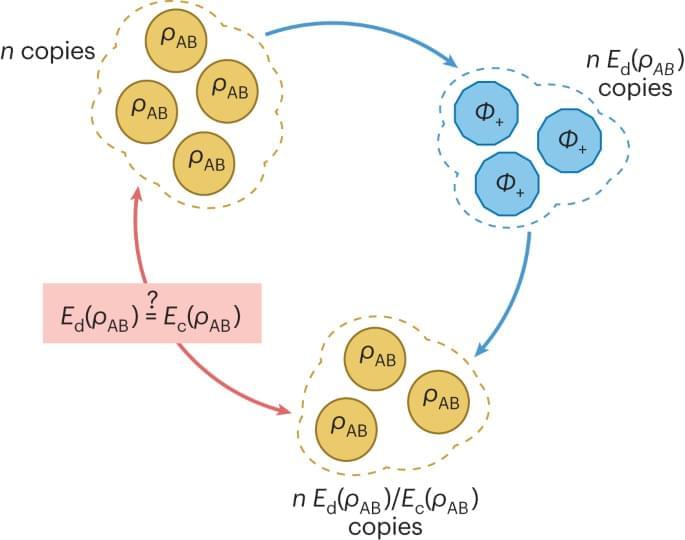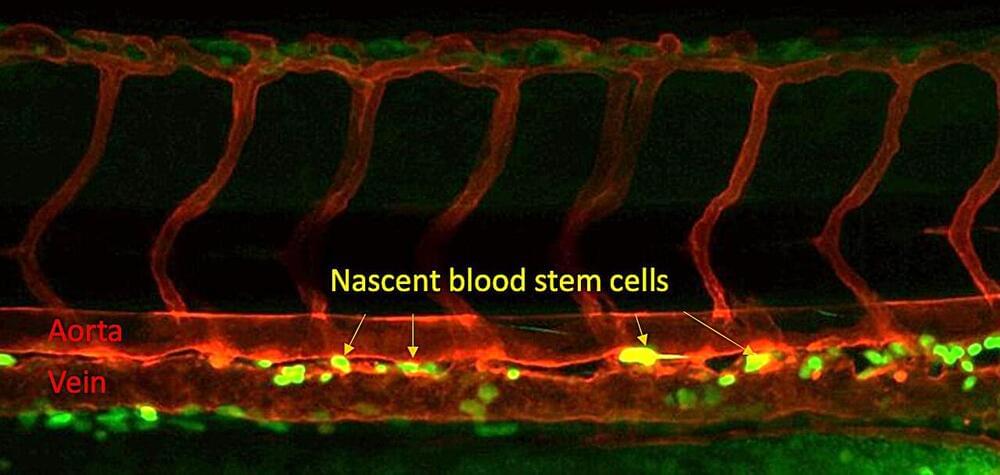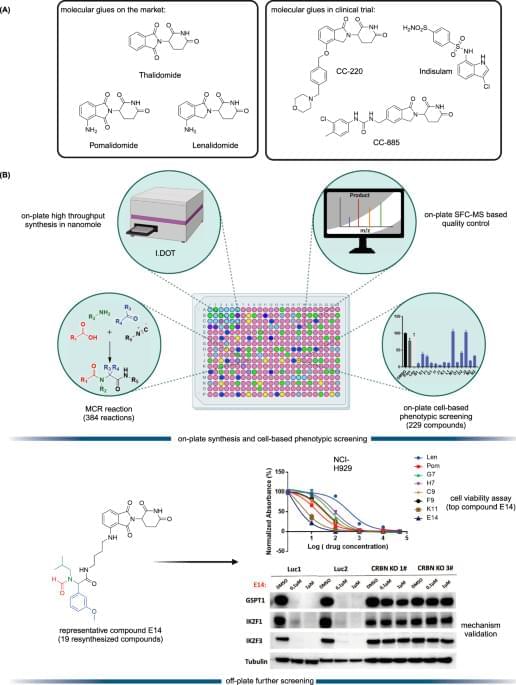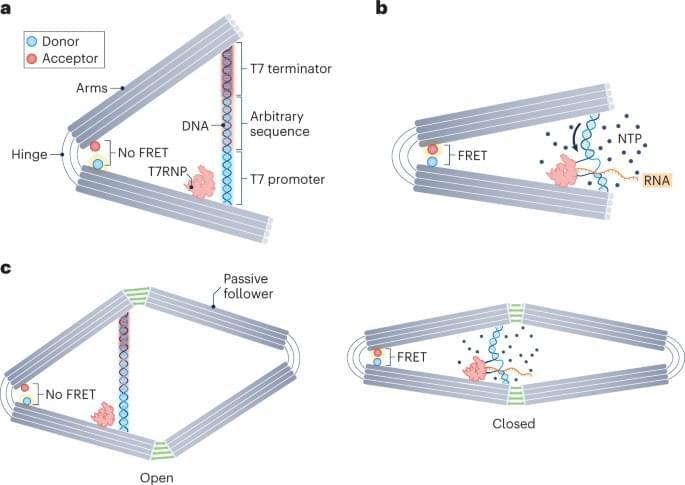Quantum hypothesis testing—the task of distinguishing quantum states—enjoys surprisingly deep connections with the theory of entanglement. Recent findings have reopened the biggest questions in hypothesis testing and reversible entanglement manipulation.
A microbial sensor that helps identify and fight bacterial infections also plays a key role in the development of blood stem cells, providing a valuable new insight in the effort to create patient-derived blood stem cells that could eliminate the need for bone marrow transplants.
The discovery by a research team led by Raquel Espin Palazon, an assistant professor of genetics, development and cell biology at Iowa State University, is published in Nature Communications. It builds on prior work by Espin Palazon showing that the inflammatory signals that prompt a body’s immune response have an entirely different role in the earliest stages of life, as vascular systems and blood are forming in embryos.
Espin Palazon said knowing that embryos activate the microbial sensor, a protein known as Nod1, to force vascular endothelial cells to become blood stem cells could help develop a method to make blood stem cells in a lab from a patient’s own blood.
Researchers at the University of Chicago’s Pritzker School of Molecular Engineering (PME), Argonne National Laboratory, and the University of Modena and Reggio Emilia have developed a new computational tool to describe how the atoms within quantum materials behave when they absorb and emit light.
The tool will be released as part of the open-source software package WEST, developed within the Midwest Integrated Center for Computational Materials (MICCoM) by a team led by Prof. Marco Govoni, and it helps scientists better understand and engineer new materials for quantum technologies.
“What we’ve done is broaden the ability of scientists to study these materials for quantum technologies,” said Giulia Galli, Liew Family Professor of Molecular Engineering and senior author of the paper, published in Journal of Chemical Theory and Computation. “We can now study systems and properties that were really not accessible, on a large scale, in the past.”
Targeted protein degradation (TPD) is an emerging therapeutic modality and has attracted great attention from academia and industry1,2. The prototypical TPD agents, molecular glues (MGs) and proteolysis targeting chimeras (PROTACs), can lead to temporal proteasomal degradation of the protein-of-interest (POI). PROTACs are small heterobifunctional molecules integrating an E3-ligase binder and a POI binding moiety through a synthetic linker construct. The PROTACs technology has been applied to degrade numerous pathological proteins and a rich pipeline is currently progressing into preclinical and early clinical trials3,4,5. However, overcoming PK/PD issues towards clinical compounds is demanding due to the intrinsically high molecular weight and related physicochemical properties6. On the other hand, MGs are small molecules with beneficial ‘drug-like’ physicochemical properties binding to an E3 ligase, and, similarly to PROTACs, leading to neosubstrate proteasomal degradation. Their mechanism of action is however less predictable; their often hydrophobic surface-exposed portions of the MGs seem to change the hydrophobic surface area of the E3 ligase and thereby leading to neosubstrate ubiquitination and degradation7,8. MGs have already proven their validity as marketed drugs, as there are several approved drugs or clinical compounds working by an MG mechanism (Fig. 1A), for example, the IKZF1/3 degrader thalidomide and its analogs pomalidomide and lenalidomide8, and the RBM39 degrader indisulam9. Thalidomide analogs induce selective ubiquitination and degradation of two lymphoid transcription factors, IKZF1 and IKZF3, by the CRBN-CRL4 ubiquitin ligase10. Additionally, CSNK1A1 (CK1α) was recently discovered as a lenalidomide-specific neo-substrate11. Interestingly, modification of pomalidomide or lenalidomide can have a profound impact on the degradation potency and degradation profiles. For example, CC-220 (Fig. 1A) showed 10-fold more potency in the cells than lenalidomide, and CC-885 (Fig. 1A) was found to induce degradation of the substrate GSPT112,13. Both MGs and PROTACs are emerging drug modalities providing interesting features over classical pharmacology-driven drugs by their ability to drive the destruction of proteins that have multiple functions, thereby potentially overcoming resistance mechanisms and providing new pharmacology. While PROTACs can be developed highly rationally, MGs are discovered rather serendipitously requiring synthesis and testing of large series of compounds14,15. Additionally, the discovery of MGs and PROTACs is done in a sequential, often mmol scale synthesis which is time-consuming and expensive.
In this work, to address current shortcomings in MGs discovery, we use the direct-to-biology (D2B) approach and combined the automated, high throughput miniaturized synthesis with cell-based phenotypic screening (Fig. 1B). The I.DOT (Immediate Drop on Demand Technology, a pressure-based nano dispensing technology) is employed to accelerate the synthesis of diverse MGs libraries on nano scale16,17,18,19,20,21. In a subsequent cell-based phenotypic screening cascade, the compounds are tested in the thalidomide and analog sensitive MM.1S multiple myeloma cell line which reportedly is used for MGs screening22. In this D2B screening platform, the crude compounds are directly screened on cells without further chromatographic purification or clean up. Then, the 19 best compounds are selected for re-synthesis on mmol scale followed by purification and fully characterized.
A biohybrid, leaf-spring design of DNA origami functions as a pulsating nanoengine that exploits the DNA-templated RNA transcription mechanism while consuming nucleoside triphosphates as fuel. The nanoengine also drives a nanomechanical follower structure.
But what would it actually mean to transfer your mind from “meat space” to cyberspace, and how could it be done? The basic idea rests on several assumptions, says Angela Thornton, a researcher at the Horizon Centre for Doctoral Training at University of Nottingham, who is also partnered with the Carboncopies Foundation, a non-profit that focuses on “whole brain emulation” and the creation of substrate-independent minds. “It assumes that we could replicate our brain [with] a certain level of understanding of how it works,” she says. “Not necessarily knowing all the detail, but enough to be able to emulate it.” Then, she adds, we have to make the assumption that the “mind” (i.e. the abstract part of us that thinks, remembers, imagines and senses) naturally emerges from the structures of the physical brain.
This is a lot to take on, which is partly why current brain emulation research is still stuck at the level of worms and, in more advanced studies, mice. Whether you agree with them or not, though, the arguments to take experiments further – toward larger mammals and, finally, humans – are quite obvious. For one, we could theoretically ‘live’ forever as a disembodied consciousness (or at least until the machines that hosted our virtual minds were destroyed), and continue interacting with our loved ones after they’ve passed as well. It’s possible that this could also go some way to solving the alleged population crisis, while limiting the impact of our physical bodies on the planet’s finite resources.
Of course, there are plenty of important questions that need answers before any of this can actually happen. Below, Thornton helps us unpick some of the main constraints and controversies.
With a demand for food and beverage (F&B) packaging inspection systems, the industry faces challenges. See how LandingLens & artificial intelligence can help.
Japanese researchers have created and open-sourced a flying firefighting hose that levitates and steers itself to fight fires using its own water pressure as a two-part propulsion system, spraying water down onto fires and keeping operators safe.
The “flying dragon” system has two four-nozzle propulsion units built in – one at the end of the hose, one maybe 3 m (10 ft) back. Each of these can be thought of as something like a watery quadcopter – valves and swivels on each nozzle control flow and direction of thrust, allowing it to rise, balance and steer itself in the air the way a regular drone might … Well, two drones really, connected with a heavy rope and dragging a heavy tail.
A maximum flow rate of 6.6 liters (1.5 gal) per second gives pressure ratings up to 1 megapascal (145 psi). That’s enough to lift the hose some 2 m (6.6 ft) above the last thing it’s been draped on. The hose on the prototype at this point is just 4 m (13.2 ft) long, and runs back to a little control station trolley, where an operator stands and drives the thing.
Humans as Cyborgs
Posted in cyborgs, innovation
Cyborgs are often misunderstood as mere humans with metallic skin or head-up displays in their visions. However, the true essence ofs lies in embedding tools within oneself, thereby augmenting and influencing personal skills. Surprisingly enough, humans have been unknowingly embracinganization for millennia through basic inventions such as clothing, serving as individual shelters against harsh weather conditions. Let’s delve deeper into understanding the fascinating history and how we are closer to the machine than man.
Can machine learning predict chaos? This paper performs a large-scale comparison of modern forecasting methods on a giant dataset of 135 chaotic systems.
Chaos and unpredictability are traditionally synonymous, yet large-scale machine-learning methods recently have demonstrated a surprising ability to forecast chaotic systems well beyond typical predictability horizons. However, recent works disagree on whether specialized methods grounded in dynamical systems theory, such as reservoir computers or neural ordinary differential equations, outperform general-purpose large-scale learning methods such as transformers or recurrent neural networks. These prior studies perform comparisons on few individually chosen chaotic systems, thereby precluding robust quantification of how statistical modeling choices and dynamical invariants of different chaotic systems jointly determine empirical predictability.









